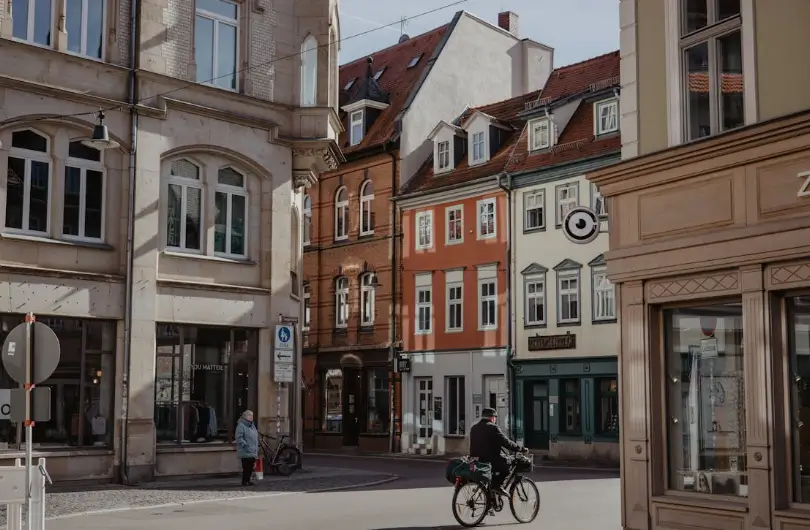What Planners Wish the Public Knew About Development Review
AKA: Why your neighbor’s shed got denied but that parking garage is already halfway built.
Ever wonder why that giant apartment complex got approved near your neighborhood?
Or why your neighbor’s fence got denied but somehow a gas station with 87 floodlights and 5-foot-tall LED signs popped up overnight?
Yeah. Us too.
To the average person, development review feels like a weird game with rules no one explained, where some people get to build whatever they want, and others can’t even extend their porch without a minor existential crisis.
But here’s the truth: development review isn’t as simple as yes or no.
Most planners aren’t out here playing SimCity with your neighborhood. We’re working inside a system full of codes, regulations, timelines, and legal land mines that even we sometimes need a flowchart to explain.
And honestly? We wish more people knew how it actually works. Because when you do, the whole process starts to make a lot more sense which translates into a lot less rage...at least we hope it does.
You could just be a rageful person and...well....can't help you there.
We Don’t Have As Much Power As You Think
We know, planners often look like the final boss.
But truth is, if a project meets the zoning code and doesn’t trigger any special review thresholds, we legally can’t say no.
We’re not out here picking favorites. If something is “by right,” (that is, if a development is allowed without needings special approval) it doesn’t matter if it’s ugly, annoying, or right next to your kid’s treehouse, we’re bound to approve it. That’s not being careless. That’s being legal.
Want us to block it? Then someone needs to change the code. Which leads us to...
We Follow the Code Even When It’s Outdated
Yep. We’re out here applying zoning regulations written in the 80s... the 1980s. Maybe even the 70s!
So while the world has evolved with remote work, climate change, and a renewed push for walkable, connected communities, some cities are still using codes designed for when shopping malls were the future.
We know the code’s outdated. You know it’s outdated. But until it’s rewritten, we’re required to enforce it. Even if it means denying a home office in your garage because it’s technically a “non-conforming accessory structure.”
The Public Process Isn’t Built for... You Know, People
Posting a notice on a telephone pole and hoping neighbors see it?
Holding a public hearing on a Tuesday at 6:00 p.m. in a fluorescent-lit conference room with no childcare, no snacks, and terrible parking?
Yeah. That’s not engagement. That’s a trap.
Planners know it’s broken. Many of us are pushing for better outreach, earlier conversations, and real engagement. But for now? The process is what it is. And it often leaves the public out until it’s too late to have much say.
That’s frustrating.
But often, the windows for public input are short, technical, or hard to access.
The public process wasn’t designed with the public in mind. And that shows.
We Read the Fine Print So You Don’t Have To (But Maybe You Should Anyway)
Yes, we read the traffic studies, stormwater plans, arborist reports, and 500-page PDFs with grainy site plans. And we do it to make sure everything follows policy regulations.
But sometimes we wish people saw the behind-the-scenes effort that goes into this work. Because when someone says, “Y’all just rubber-stamped this,” and we’ve spent three weeks negotiating a tree preservation plan and redrawing setbacks... it kinda stings.
We don’t expect you to read it all. But we do want folks to know we take it seriously.
We’re People Too
A lot.
We’re the public face of things we didn’t design, vote on, or profit from. And while we signed up to serve, we didn’t sign up to be your personal zoning piñata.
Most of us love our cities. We’re in this work because we care. And when someone cusses us out at a public meeting or says we “must be getting paid off,” it doesn’t just hurt, it makes it harder to keep doing the job with heart.
Let’s Rethink the System Together
If development in your community doesn’t reflect your values, don’t just fight every project.
Shape
the
system!
Codes can be updated. Plans can be rewritten. Processes can be rebuilt with the public in mind.
But that only happens when people show up, not just to oppose, but to help reimagine.
So yeah, we wish you knew how development review really worked.
Because if you did, you’d probably still be frustrated, but you’d also be empowered.
And that’s when things actually start to change.
If you hate the development review process, you may be one of the people that hates zoning as well. Feel free to read about it here.
%20(1200%20x%20237%20px)%20(300%20x%2059%20px).webp)
.jpg)

.webp)


